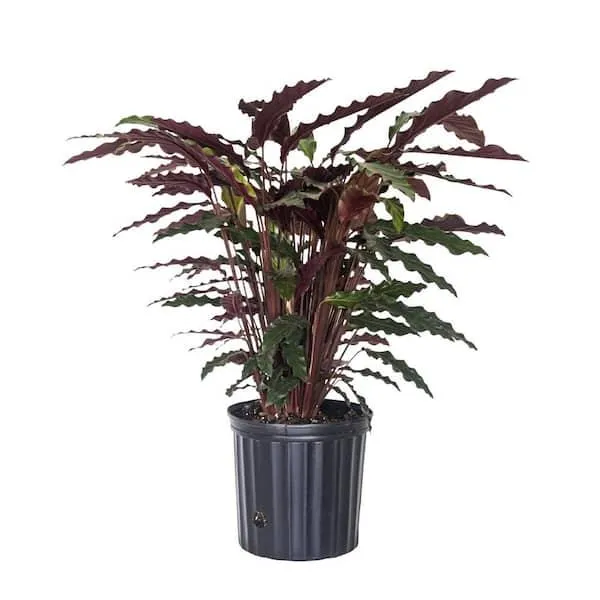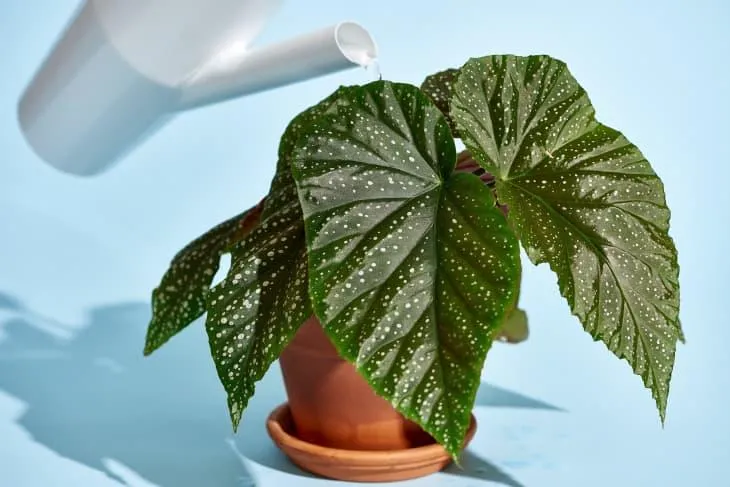A Guide to Choosing and Caring for Fuzzy Leaf Houseplants
Whether you’re looking to add some visual appeal or moisture-loving greenery to your indoor space, fuzzy leaf houseplants make excellent options. Their soft, velvety leaves provide terrific tactile appeal and come in a variety of shapes, sizes, and colors. In this article, I’ll discuss some of the most popular fuzzy leaf varieties, things to consider when choosing one, and tips for providing them with optimal growing conditions.
Popular Fuzzy Leaf Houseplant Varieties
Here are a few fuzzy leaf plants commonly found in homes and offices:
- Peperomia – With over 1,000 species, peperomias offer a huge range of fuzzy and smooth leaf shapes and colors. Some popular varieties include Peperomia caperata ‘Rosso’ with its crimson foliage and Peperomia obtusifolia ‘Variegata’ streaked with creamy white.
- Coleus – Notorious for their vibrant foliage ranging from reds to pinks, oranges, and greens with elaborate patterns, coleus provide fantastic color all season long. ‘ColorBlaze Chili Pepper’ is a favorite for its fuzzy dark red leaves.
- Polka Dot Plant – Easy to recognize by its round, fuzzy leaves marked with darker spots, Hypoestes phyllostachya thrives in low or bright light. Its cascading habit makes it well-suited for hanging baskets or trailing over edges.
Other options with soft leaves include Calatheas, Ferns like Boston Fern, and Peperomia ‘Ruby Cascade’ with beautiful ruby-red new growth.

Things to Consider When Choosing
When selecting a fuzzy leaf plant, consider the following:
- Lighting: Match the variety’s light needs to your space – is it low, medium, or high light? For example, peperomias tolerate low light better than coleus.
- Watering: Some fuzzy leaf plants like calatheas are susceptible to underwatering or drying out, while others like fern do fine with average home moisture levels.
- Size and shape: Factor in the plant’s mature dimensions to pick one suitable for your decorative needs – trailing, compact, bushy growth habits, etc.
- Color preferences: Pretty much any hue or pattern combination exists in fuzzy leaf plants to complement your decor.
- Care level: Some plants like polka dot plant and coleus are very easygoing while others demand more precise conditions. Beginners may like peperomias.
Caring for Fuzzy Leaf Houseplants
With a little TLC, fuzzy leaf plants can thrive indoors for many years. Here are some care tips:
- Water: Water when the top 1-2 inches of soil are dry but do not allow the plant to sit in water at the bottom of the container. Some like calathea may need water twice a week.
- Light: As mentioned, placement is crucial – most do well in medium to low indoor lighting but may need supplementing for best growth and color retention during winter.
- Humidity: Fuzzy leaves prefer average home humidity levels but may need occasional misting. Pebble trays, humidifiers, or peat moss help calatheas in dry indoor air.
- Fertilizer: Use a dilute, water soluble houseplant fertilizer monthly during spring and summer when plants are actively growing.
- Pruning: Remove any damaged, diseased, or dead parts and repot every 1-2 years when roots fill the container during peak growing season.
- Pests: Check regularly for signs of pests like spider mites on the fuzzy foliage and treat immediately if found.
With some routine care tailored to each variety’s needs, fuzzy leaf plants make wonderful additions that will provide beauty and greenery indoors for many seasons to come. Hopefully this guide has helped you choose the perfect plant to suit your space and care preferences!

Fuzzy Leaf Houseplant Care Guide
| Common Name | Scientific Name | Light Needs | Water Needs | Temperature |
|---|---|---|---|---|
| Peperomia | Peperomia spp. | Bright indirect light | Allow soil to dry slightly between waterings | 55-75°F |
| Fittonia | Fittonia spp. | Bright indirect light | Keep soil moist | 65-80°F |
| Pilea | Pilea peperomioides | Bright indirect light | Allow top 1-2 inches of soil to dry between waterings | 60-80°F |
| Calathea | Calathea spp. | Bright indirect light | Keep soil moist | 65-80°F |
| Polka dot plant | Hypoestes phyllostachya | Bright indirect light | Allow top 1 inch of soil to dry between waterings | 65-80°F |
FAQ
-
What type of lighting does a fuzzy leaf houseplant need?
A fuzzy leaf houseplant basically needs bright, indirect sunlight. Direct sun can sort of dry out the fuzzy leaves. Place it in a spot with nice daylight, but out of the direct rays. Around 4-6 hours of sun each day seems to work well for most varieties.
-
How often should I water my fuzzy leaf plant?
It depends on the individual fuzzy leaf plant, but as a general rule, water when the top inch or so of soil gets dry. You don’t want the soil to become bone dry, but it’s best not to keep it soggy wet constantly either. Basically, stick your finger in the soil and water when it starts to feel somewhat dry. Around every 7-10 days is usually sufficient, depending on your home’s humidity level.
-
What kind of fertilizer is best for a fuzzy leaf plant?
Most fuzzy leaf houseplants do well with a balanced houseplant fertilizer that is diluted to half or quarter strength. Something around a 20-20-20 ratio works for many varieties. You can fertilize during the growing season, which is typically spring through fall. Don’t overdo it though, as too many chemicals can basically fry the fuzzy leaves. Slow release fertilizer pellets buried in the soil may be kind of safer option if you’re not confident measuring liquid doses.

-
How do I get my fuzzy plant to grow bushier?
To get a fluffier, fuller plant, you’ll want to prune it periodically. Snip off leggy new growth to encourage dense, compact growth. This seems to amazeingly work to promote more stems and leaves clumped closer together in the center. Be sure to use clean pruning shears so you don’t transfer any germs. You can trim as often as every few months during warmer weather to maintain a rounded shape. Does that help your fuzzy leaf be its fullest, puffiest self?
-
My fuzzy leaves are turning yellow – what’s wrong?
Yellowing leaves can signal various issues. A common cause is overwatering, which can basically drown the roots. Try loosening the soil to improve drainage and check if the roots look dark and mushy. It also may be due to underwatering and drying out between waterings. Pests could be another reason – check thoroughly for signs of webbing, spots, or bugs. Yellowing may mean your fluffy plant needs more sunlight exposure or different lighting conditions. Perhaps try moving it to a brighter spot. Hopefully one of those suggestions helps restore its green glow!
-
Are fuzzy leaf plants toxic to kids or pets?
Most fuzzy leaf varieties are non-toxic and pose no risk to children or furry companions. However, there are a few exceptions that contain mild toxins in their sap or leaves if ingested. Kalanchoe and peace lilies are two genera to watch out for. Symptoms are generally nothing worse than an upset tummy. But still, it’s always safest to keep plants up high or behind barriers just to be sure. You never know with rambunctious kids and noses-first pets! Better to err on the side of caution than deal with any potential issues, right?

So in summary, fuzzy leaf houseplants are easygoing as long as they get the right conditions. Adjust watering based on soil dryness. Feed occasionally in warmer months. Prune regularly to maintain bushiness. Hopefully this helps you care for your fuzzy friend! Let me know if any other questions come to mind regarding these delightful fluffy plants.
